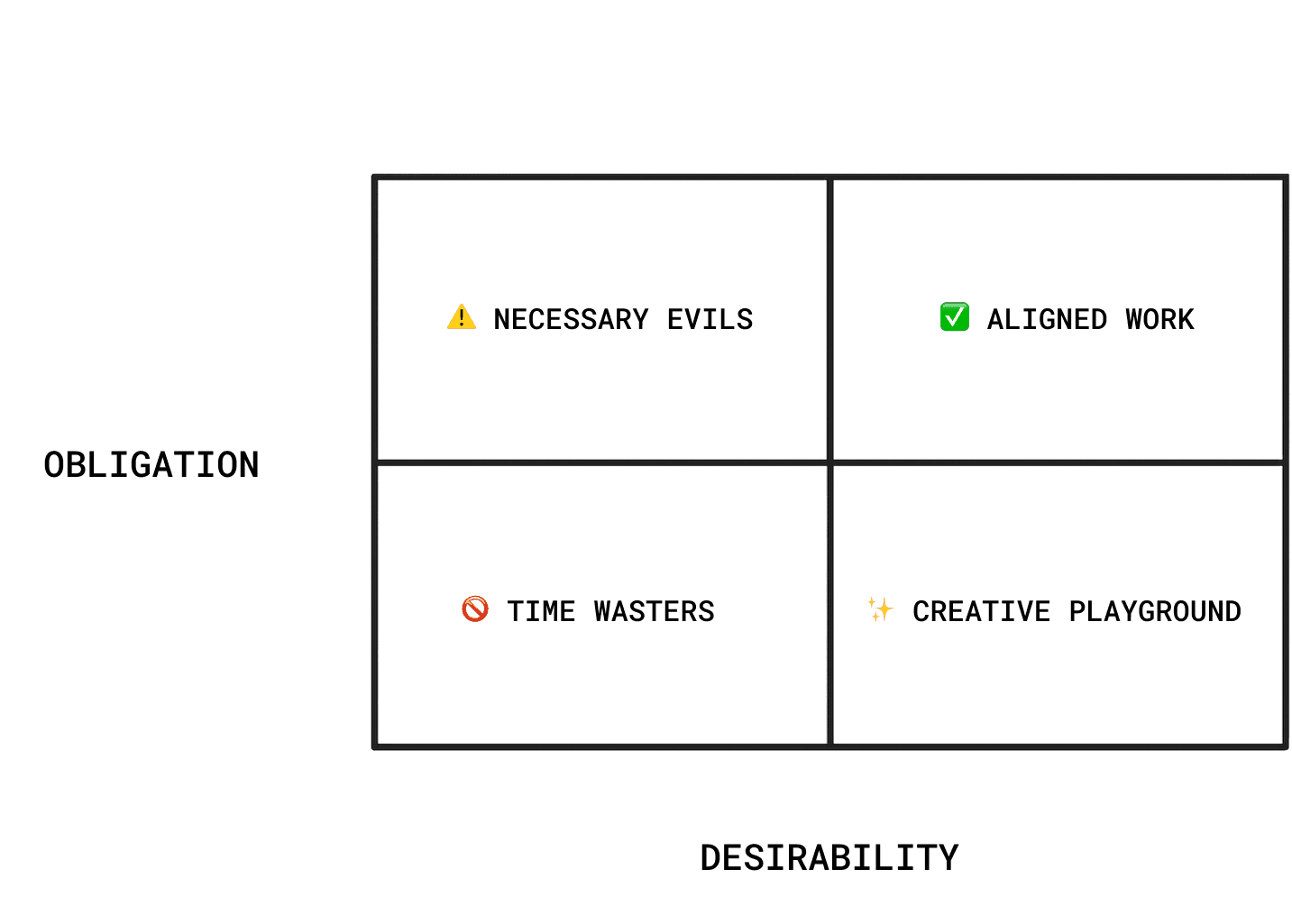On starting over
Read →
I’ve spent over a decade experimenting with productivity systems.
GTD, the Eisenhower Matrix, time-blocking, bullet journaling, inbox zero — I’ve tried them all. Some helped, some didn’t. But over time every system eventually broke down.
Not because I’m lazy.
Not because I lack discipline.
But because I’m human.
More specifically, a creative human — with a mind that doesn’t always move linearly. My days aren’t made of repeatable inputs and predictable outputs. They’re filled with ideas, deadlines, collaborations, inspirations, pivots, and experiments. Most productivity systems don’t know what to do with that. They’re built for machines. Or for people pretending to be machines.
So I started building a new one. A simpler one. One that actually mirrors how I think, feel, and operate.
The most popular frameworks — like the Eisenhower Matrix — ask you to rank tasks by urgency and importance. Which sounds good on paper.
But these systems are blind to desire.
They don’t account for what excites you, what gives you energy, what you’re curious about, or what feels meaningful. They assume you can (and should) treat every task like a soldier in a queue, to be processed with equal focus and effort.
But if you’re a creative — an entrepreneur, a designer, a builder — you know that’s not how it works.
You can’t force brilliance. You can’t grind your way to your best ideas. Don't get me wrong, there are times you must grind through. But at some point, you will need space. You need inspiration. You need desire in the equation.
I built this framework for myself.
Instead of focusing on urgency and importance, it asks two different questions:
Do I want to do this? (Desire)
Do I have to do this? (Obligation)
You plot your tasks, projects, or opportunities on those two axes. That’s it.
Here’s what the matrix looks like:

Aligned Work - This matters and I want to do it. Do it first. Protect time for it.
Necessary Evils - You’ve committed to this — but it drains you. Batch it. Delegate it. Renegotiate it.
Creative Playground - No deadline. No pressure. But it lights you up. This is where your best ideas are born.
Time Wasters - You don’t want to do it, and you don’t have to. Let it go. Completely.
This matrix doesn’t just optimize time — it protects energy. It accounts for the human factors most systems ignore:
What feels alive vs. what feels dead
What aligns with your values
What’s urgent only because someone said so
What’s optional but inspiring — and might unlock your next breakthrough
It also helps you spot traps: like spending all day on things you owe but don’t enjoy, while neglecting the work that could change your life. Or getting lost in exciting, optional projects while letting real obligations pile up.
It’s not about avoiding discomfort. Some of your best work will live in the “necessary evils” quadrant. But it is about becoming more honest — with yourself and your time.
Great question. Urgency is still real — it’s just not the primary lens.
Once you’ve mapped your work into the matrix, you can apply urgency as a secondary layer. Something can be aligned and urgent. Draining and urgent. Optional and time-sensitive.
That’s where judgment comes in. This matrix doesn’t replace thinking — it just helps you think more clearly.
You can’t systematize your way into a better life if the system ignores your actual life.
This is the matrix I now use to plan my weeks, manage competing projects, and protect my energy. It’s not perfect, but it’s more honest. It gives me permission to follow instinct — without abandoning responsibility. It helps me make better trade-offs.